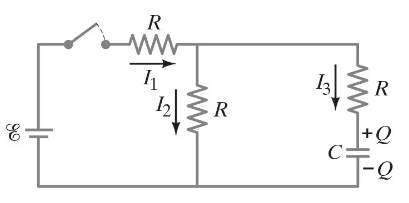Paper has a dielectric constant K = 3.7 and a dielectric strength of 15 x 106 V/m. Suppose that a typical sheet of paper has a thickness of 0.11 mm. You make a “homemade” capacitor by placing a sheet of 21 cm x 14 cm paper between two aluminum foil sheets (Fig. 24–40) of the same size. About how much charge could you store on your capacitor before it would break down?
<IMAGE>







